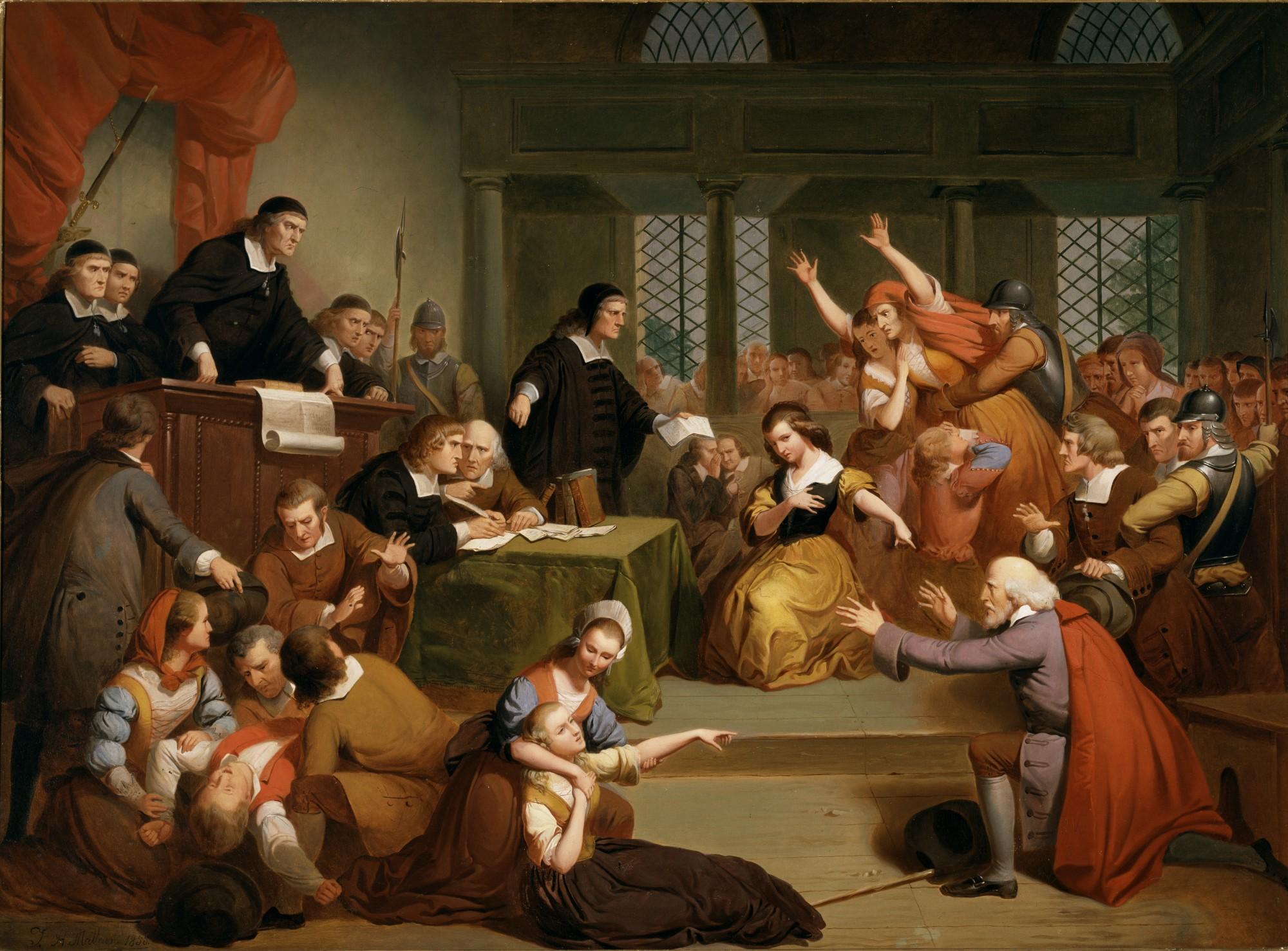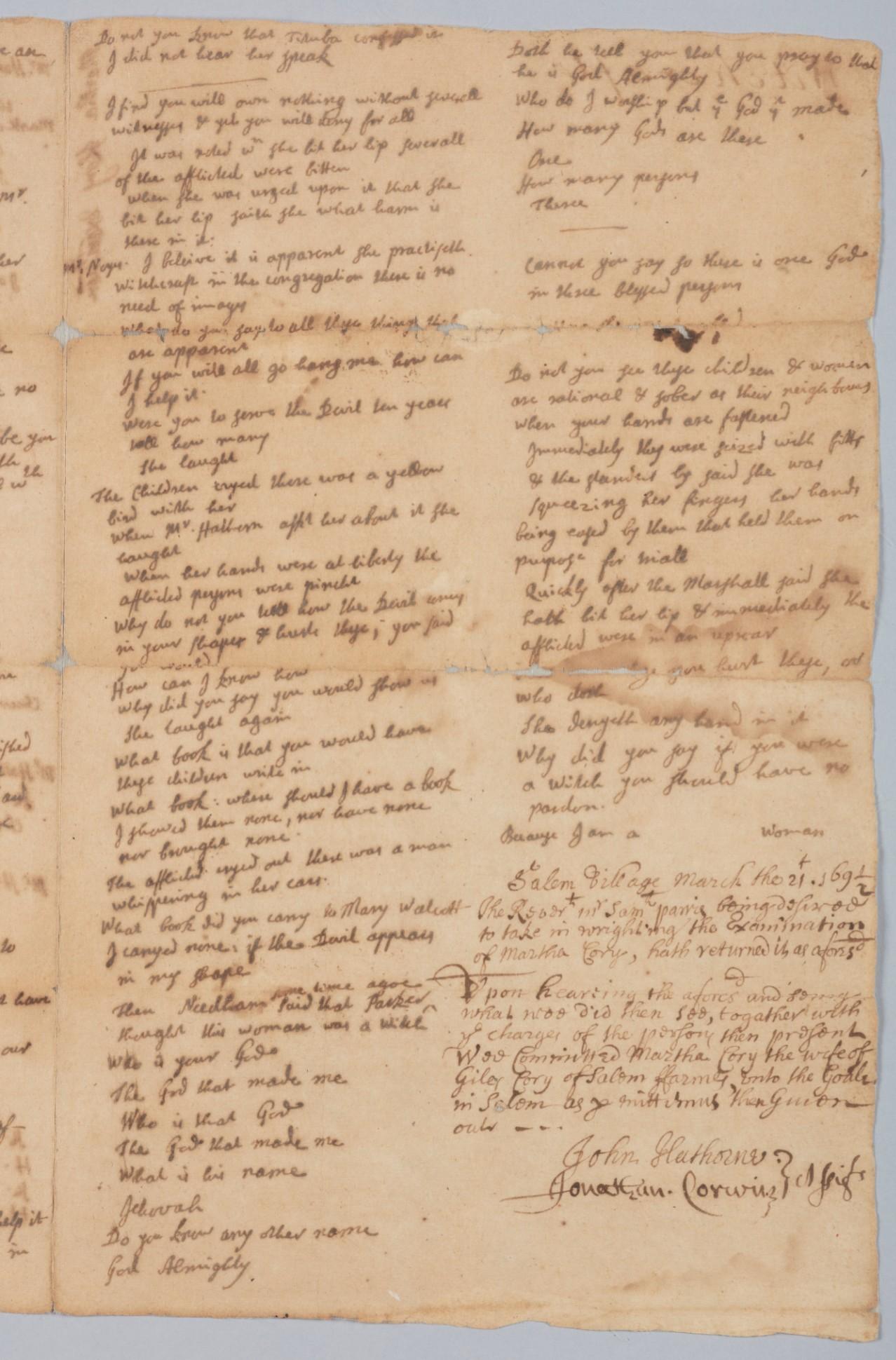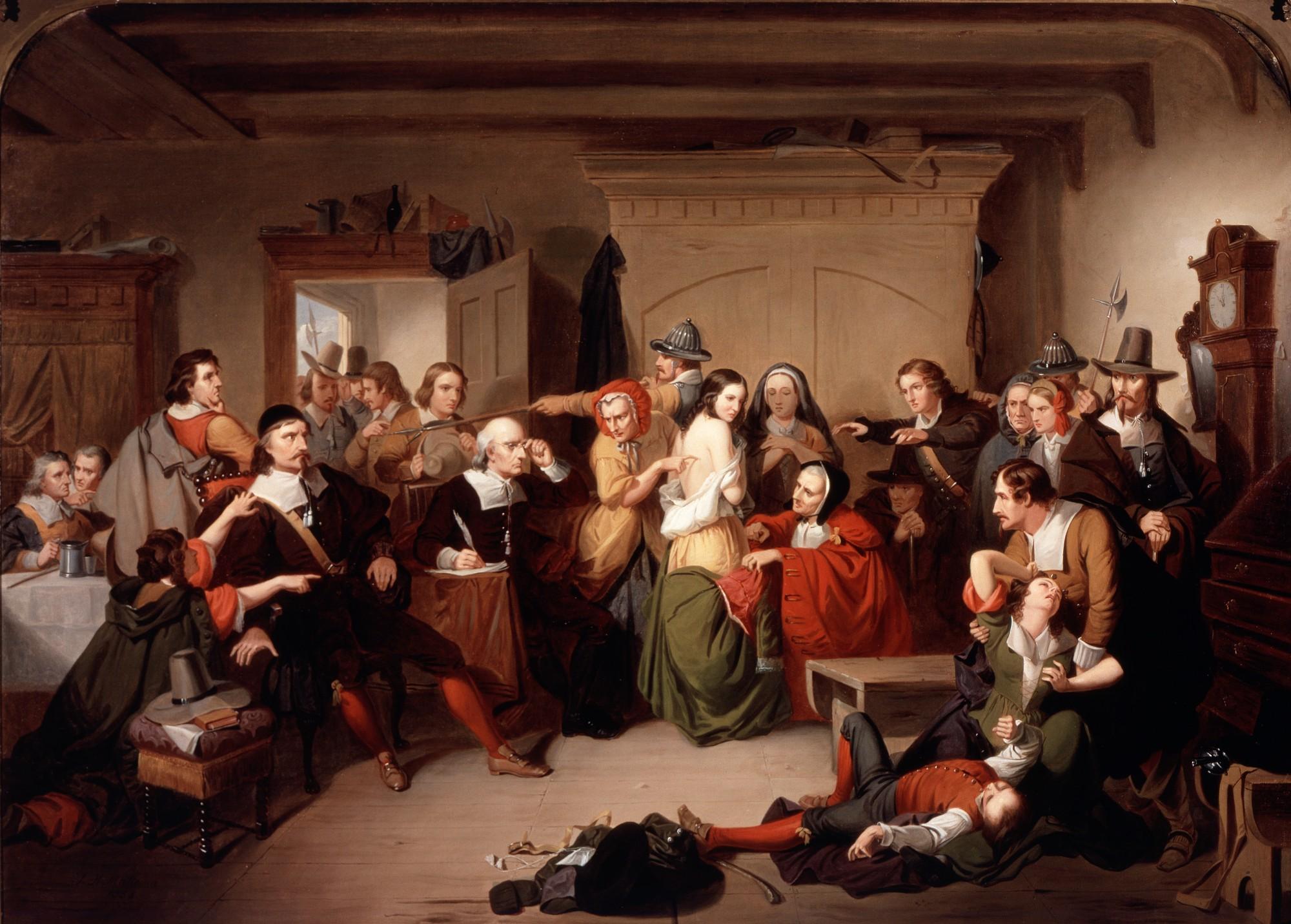From June 1692 to March 1693, hysteria swept through the Massachusetts Bay Colony, leading to the execution of twenty-five men, women, and children. One of the most fascinating and frightening episodes in American history, the Salem Witch Trials have inspired innumerable books, movies, and televisions shows, and continue to live large in our imaginations. At PEM, courtroom paintings by Tompkins Harrison Matteson capture the drama of this period and the sensationalized way we tend to view those tragic events today.
But through smaller articles and artifacts, this exhibition shows the humanity both of those who lost their lives and those who miscarried justice. The handwritten account of the examination of Martha Cory is one such document, showing us through her own words, and the hand-written account of others, the minute details that culminated in this tragic episode.
Judge Samuel Sewall was a prominent figure in the colony and presided over many of the trials. Though initially a believer, he would later see the err of his ways and apologize for his involvement. Sewall would go on to serve as a judge for many years. Like many people involved in the trials, he had to go on with his life and try to reckon with the role he played in persecuting innocent people. Today Sewall is also remembered for his essay from 1700 denouncing slavery, The Selling of Joseph.






























